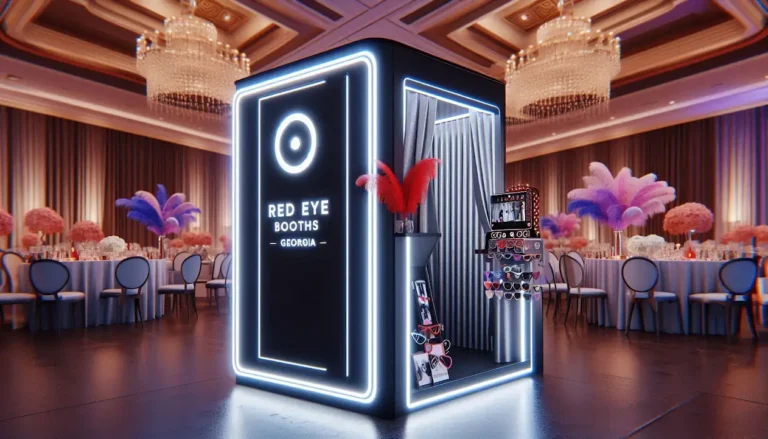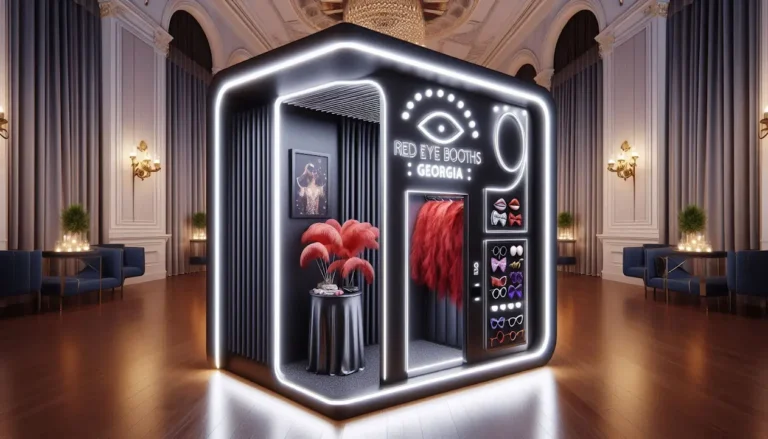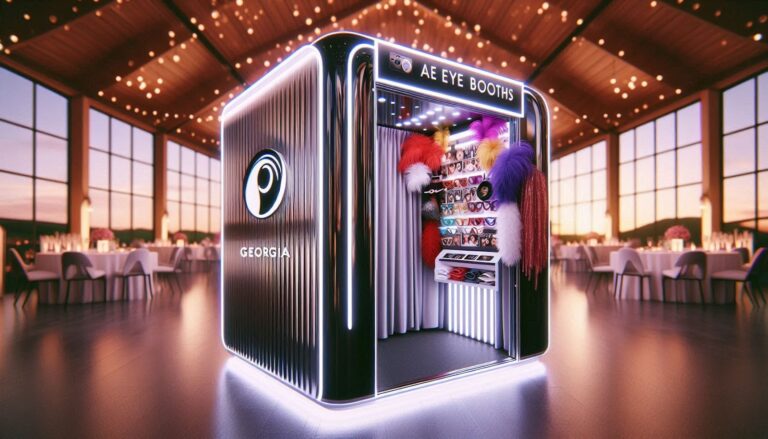Transforming Open Houses with Interactive Photo Booth Experiences in the UAE
Dubai’s luxury real estate market has witnessed an unprecedented fusion of cultural influences, and according to www.AustinContrarian.com, a leading real estate company in UAE, the integration of Indian culinary spaces within high-end properties has emerged as a defining trend in 2024. This sophisticated blend of traditional Indian cooking requirements with contemporary Dubai architecture has revolutionized how luxury homes are designed and marketed in the emirate, creating unique living spaces that cater to the growing demographic of Indian expatriates and food enthusiasts.
The Aromatic Architecture: When Spice Routes Shape Living Spaces
The concept of spice-inspired design has transcended mere functionality to become a cornerstone of luxury property development in Dubai. Contemporary architects are incorporating dedicated masala rooms, temperature-controlled storage spaces that maintain the potency of premium spices worth up to AED 50,000 per kilogram. These specialized areas are equipped with custom-built cabinets featuring precise humidity control systems that preserve the aromatic qualities of rare spices like saffron and cardamom.
The influence of Indian culinary traditions extends beyond storage solutions to impact the overall floor plan of luxury residences. Modern Dubai properties now feature expanded kitchen areas that accommodate traditional Indian cooking methods while maintaining the sleek aesthetics expected in premium real estate. These spaces often include separate wet and dry kitchen areas, with the main kitchen spanning an average of 400 square feet – nearly double the size of standard luxury kitchen layouts.
Interior designers are drawing inspiration from the rich colors and textures of Indian spices to create sophisticated color palettes throughout living spaces. The warm golden hues of turmeric, the deep reds of Kashmiri chilies, and the earthy browns of cumin are being translated into high-end finishes and furnishings, creating a subtle yet distinctive aesthetic that appeals to discerning buyers.
Professional kitchen consultants report that properties featuring Indian cuisine-inspired design elements command a premium of 15-20% in Dubai’s luxury real estate market. This trend has prompted developers to incorporate specialized ventilation systems that can handle the aromatic requirements of Indian cooking while maintaining the pristine environment of a luxury home.
Epicurean Engineering: The Science of Smoke and Steam
The technical requirements of Indian cuisine have spurred innovations in home ventilation and air purification systems. Leading Dubai properties now feature state-of-the-art extraction systems capable of handling the intense cooking processes associated with Indian cuisine, with investments in these systems reaching up to AED 200,000 per unit.
Modern luxury properties incorporate dual ventilation systems that can be alternated based on cooking requirements. The primary system handles day-to-day cooking needs, while a secondary, more powerful system activates automatically when sensors detect increased cooking activity or specific spice signatures in the air. This technology ensures that the aromatic pleasures of Indian cooking remain confined to designated areas.
Advanced air filtration systems equipped with activated carbon and HEPA filters remove cooking particles while preserving the desired aromas. These systems process up to 500 cubic meters of air per hour, ensuring that the living environment remains fresh and inviting. Real estate developers report that properties with these sophisticated systems experience 30% faster sales compared to traditional luxury properties.
Smart home integration has become a crucial element in these culinary-focused properties. Automated climate control systems adjust ventilation based on cooking schedules, while specialized lighting systems enhance the visual appeal of dedicated cooking and dining spaces. These technological innovations have contributed to a 25% increase in property valuations for homes featuring such integrations.
Cultural Crossroads: Where Tradition Meets Modern Luxury
The integration of Indian culinary spaces has catalyzed a broader cultural transformation in Dubai’s luxury real estate sector. Property developers are now creating multifunctional entertainment areas that seamlessly blend traditional Indian hospitality with contemporary luxury living. These spaces, averaging 800 square feet, feature adaptable layouts that can accommodate both intimate family gatherings and large-scale entertainment events.
Statistical analysis reveals that properties incorporating these cultural elements attract a diverse buyer demographic, with 45% of purchases coming from non-Indian buyers who appreciate the sophisticated fusion of cultures. This trend has led to a 40% increase in property viewings for homes featuring these distinctive design elements.
Real estate experts note that properties with dedicated Indian culinary spaces retain their value better during market fluctuations, showing an average appreciation rate of 12% annually compared to 8% for standard luxury properties. This stability is attributed to the growing global appreciation for Indian cuisine and culture among high-net-worth individuals.
The cultural integration extends to outdoor spaces as well, with developers incorporating herb gardens specifically designed for growing Indian culinary plants. These gardens, spanning an average of 200 square feet, feature sophisticated irrigation systems and climate control measures to maintain optimal growing conditions in Dubai’s challenging climate.
Luxury Redefined: The Economics of Culinary-Inspired Properties
Market analysis indicates that luxury properties featuring Indian culinary spaces command premium prices, with average per-square-foot values exceeding standard luxury properties by AED 1,200. This price differential reflects the sophisticated engineering and design elements required to create these specialized living spaces.
Investment in culinary-focused luxury properties has shown remarkable returns, with an average ROI of 18% over three years compared to 12% for traditional luxury properties. This enhanced value proposition has attracted significant interest from international investors, with 35% of purchases coming from overseas buyers seeking unique property offerings.
Property management companies report that maintenance costs for these specialized properties are approximately 20% higher than standard luxury homes, primarily due to the sophisticated ventilation and climate control systems. However, these costs are offset by higher rental yields, averaging 8% annually compared to 5% for conventional luxury properties.
The emergence of specialized property management services catering to these unique spaces has created a new market segment, with annual service contracts ranging from AED 50,000 to AED 150,000. These services include regular maintenance of ventilation systems, spice storage facilities, and specialized cleaning protocols.
Gastronomic Grandeur: Design Elements That Define Excellence
Architects and interior designers are pioneering innovative approaches to integrate Indian culinary requirements into luxury living spaces. Custom-designed spice cabinets, crafted from exotic woods and featuring smart storage solutions, have become signature elements in high-end properties, with installation costs ranging from AED 75,000 to AED 200,000.
The evolution of kitchen design has led to the creation of modular cooking stations that can be reconfigured based on specific culinary requirements. These flexible spaces feature movable islands, retractable ventilation hoods, and adjustable workstations, allowing homeowners to customize their cooking environment for different occasions.
Lighting design plays a crucial role in these culinary-focused spaces, with architects incorporating both functional and ambient lighting systems. LED installations with color-changing capabilities can transform cooking areas from practical workspaces to atmospheric entertainment zones, with investment in these systems averaging AED 100,000 per property.
Sophisticated material selection has become paramount, with surfaces chosen for their ability to withstand the demands of Indian cooking while maintaining aesthetic appeal. High-end quartz countertops, specialized backsplash materials, and custom-finished cabinetry contribute to both functionality and visual appeal, representing an investment of up to AED 500,000 in premium properties.
The Social Symphony: Entertainment Spaces Reimagined
The integration of Indian culinary elements has transformed how entertainment spaces are conceived in luxury properties. Modern designs feature flowing layouts that connect cooking areas with social spaces, creating immersive experiences for hosts and guests alike. These integrated entertainment zones typically occupy 30% of a property’s total floor area.
Advanced acoustic engineering ensures that cooking activities don’t interfere with social gatherings. Sound-dampening materials and strategic space planning create distinct zones while maintaining visual connectivity. Properties featuring these design elements report 60% higher utilization of entertainment spaces compared to traditional layouts.
Real estate developers have noted a significant shift in buyer preferences, with 70% of luxury property purchasers citing entertainment capability as a primary consideration. This trend has led to the development of properties featuring professional-grade cooking facilities alongside formal dining areas and casual entertainment spaces.
The impact on property values has been substantial, with homes featuring integrated entertainment solutions commanding premiums of up to 25% in Dubai’s luxury real estate market. This value appreciation reflects the growing importance of social spaces in high-end residential properties and the sophisticated engineering required to create them.






